Technical Library
TROPICS VIII: Insects
Entire Contents Copyright © 2010 CBHTechnical LibraryTROPICS VIII: Insects Entire Contents Copyright © 2010 CBH |
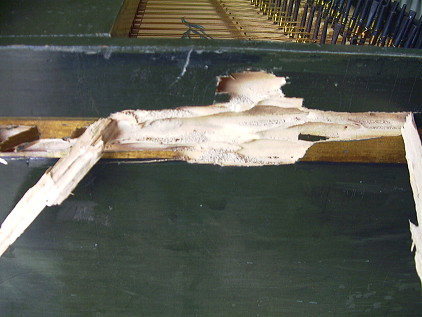 CAREY BEEBE |
| Termite eaten harpsichord spine Singapore |
Insects…
Insects can infest musical instruments as well as your furniture. If you haven’t looked for a while, you may find that you have a veritable zoo. Rest assured, though, that with few exceptions, most insects that you can see with the naked eye will rarely be found in instruments that are used regularly—the sound vibrations probably drive them crazy, and help them decide to move to a quieter neighborhood.
Termites
Unlike the Australian termite, which is subterranean and must always be in contact
with the sub-soil moisture, Singaporean drywood termites (Cryptotermes sp) are particularly dangerous. At times these insects are capable of just flying
in and establishing a colony in any piece of wood in your home. They require
neither decayed wood, nor wood that is in contact with moisture.
The picture on the left shows termite damage to an old harpsichord in Singapore. As the infestation decimated the spine, the entire side of this particular harpsichord had to be removed and replaced. You can read about this in our Restoration Report.
Moths
We’ve all seen the devastation to the cloths on old, moth-eaten pianos.
Some colored materials appear more appetizing then others. Witness old instruments
where the beasties have had a penchant for felt of a particular color, ignoring
others of identical texture close by. That could be due to the relative toxicity
of the dye used, rather than some aesthetic nouvelle cuisine consideration.
Cockroaches
Some of my tuning time prior to a rehearsal at one university was spent spearing
baby cockroaches on the soundboard with the tip of my X-Acto voicing knife. Don’t
eat and play at the same time! The cockies were eliminated when I put an already
used pest strip in the instrument. I used to recommend the Sureguard ministrips™
which are sold to protect clothes cupboards from moths. They work by slowly releasing
Dichlorvos insecticide into the air from an impregnated wad of material contained
in a ventilated plastic case. There is not much enclosed air space in a harpsichord,
and it was always preferable to use a strip already several months old—it
would still disperse enough poison to keep an instrument insect-free for a year
or more, although the manufacturer says they must be replaced every three or
four months. Although very effective, I no longer use or recommend these strips
because the dispersant is corrosive, and could soon begin eating through your
metalwork.
Mothballs bring back childhood memories of (un)Pleasant Sunday Afternoons in the local Methodist Church, when all the elderly female parishioners felt obliged to bring their furs out of storage. In any case, naphthalene is probably carcinogenic and best avoided. Use some natural camphor instead. (Any makers want to consider a sandalwood or camphorwood harpsichord?)
Silverfish
Starch-loving silverfish leave distinctive tracks where they have eaten through paper. They might also enjoy flour-based glues used for attaching Flemish papers.
Beetles & larvae
Any form of insect control would probably have also saved many of the boar-bristle
tongue springs of another instrument which close observation showed to be chewed
through right where the spring entered the jack body. Real quills can be similarly
ravaged by larvae.
Prevention & treatment
To prevent or treat more serious infestations, you may need a professionally-applied
fumigation or arsenic salt treatment. Look for Rentokil or similar companies
in your phone book.
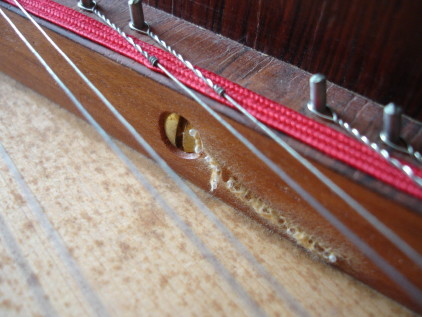 CAREY BEEBE |
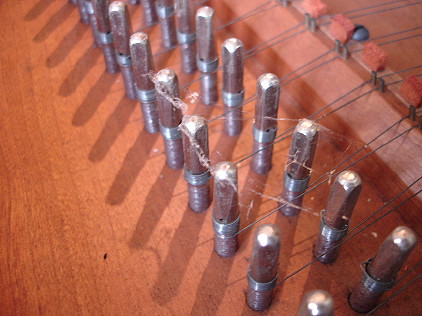 CAREY BEEBE |
|
| Insect egg cases Hong Kong |
Cobwebs on the wrestplank Penang |
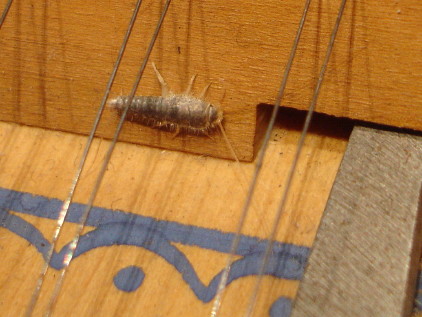 CAREY BEEBE |
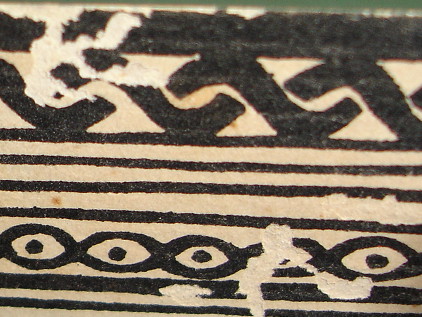 CAREY BEEBE |
|
| Grey silverfish (Ctenolepisma longicaudata) Sydney |
Silverfish damage to Flemish papers in keywell Perth |
| Technical Library overview | |
| Harpsichords Australia Home Page |